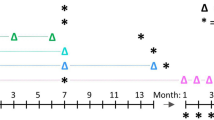Abstract
Gene transfer in the lung holds promise for the treatment of diseases such as pulmonary fibrosis, cystic fibrosis and asthma. Pulmonary surfactant has been reported to enhance expression from endobronchial, adenovirus-mediated gene transfer in experimental animals. This study examines the effect of exogenous synthetic surfactant (Exosurf) on gene expression from naked plasmid DNA administered endobronchially to adult mice. Transfection efficiency was evaluated by quantifying the expression of chloramphenicol acetyltransferase (CAT) and luciferase (Luc) genes in the lung. Endobronchial administration of either CAT or Luc expression plasmid DNA resulted in detectable concentrations of each reporter protein. CAT expression from plasmid DNA was monitored after endobronchial administration with the maximal expression observed at 3–5 days after administration and decreasing for 5 days thereafter. When DNA was delivered in a 50% suspension of Exosurf, the expression of either CAT or Luc was significantly reduced by 89.6 ± 1.4% and 82.7 ± 10.5%, respectively. The decrease in Luc expression was closely correlated (r = 0.99, P < 0.001) to log concentration of surfactant in the plasmid buffer solution (ic50 = 8.6%). CAT expression was not altered when surfactant was administered either 2 h before or after plasmid DNA instillation. Examination of the components of Exosurf revealed that two compounds, DPPC and tyloxapol, showed inhibitory effects on CAT expression. However, the inhibition caused by Exosurf appeared greater than that of either component. Our results suggest that the lung surfactant is a barrier to transfection of the endobronchial airway and may be partly responsible for the low expression of exogenous DNA in vivo in the bronchial tree.
This is a preview of subscription content, access via your institution
Access options
Subscribe to this journal
Receive 12 print issues and online access
$259.00 per year
only $21.58 per issue
Buy this article
- Purchase on Springer Link
- Instant access to full article PDF
Prices may be subject to local taxes which are calculated during checkout
Similar content being viewed by others
Author information
Authors and Affiliations
Rights and permissions
About this article
Cite this article
Raczka, E., Kukowska-Latallo, J., Rymaszewski, M. et al. The effect of synthetic surfactant Exosurf on gene transfer in mouse lung in vivo. Gene Ther 5, 1333–1339 (1998). https://doi.org/10.1038/sj.gt.3300752
Received:
Accepted:
Published:
Issue Date:
DOI: https://doi.org/10.1038/sj.gt.3300752



